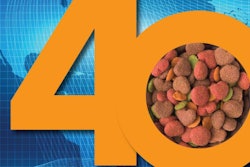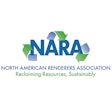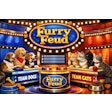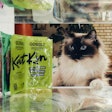
Data released by PetFlow, a retail brand of specialty pet food and supplies, in honor of National Pet Month in May, shows dogs and cats aren’t just being treated as part of the family; they’re eating like human family members as well.
As Americans’ interest in more health-conscious food choices for their own diets grows, it is also impacting what they are feeding their pets. In fact, customer data from PetFlow over the past year shows nearly 33% of dog food purchases and 21% of cat food purchases are what many brands consider human-grade products, which include organic, gluten-free, GMO-free and low-glycemic products designed specifically for pets.
“What you put in to your pet has a direct effect on the behavior that comes out of them. It is also one of the single most important decisions in helping to ensure their health and well-being,” said celebrity dog trainer and YouTube star Zak George. “It’s encouraging to see consumers making more deliberate choices about what they’re feeding their pets.”
“While consumers are recognizing the benefits of higher-quality diets and ingredients for their companions, many are confused about how to select the food that is right for their individual pet,” said George.
“In our conversations with customers around nutrition, 93% of the time they are coming to us looking for guidance on the best type of food for their specific breed of animal,” added Mike Lackman, CEO of PetFlow. “They know they want to improve the quality of life of their pets by upgrading their diet, but they aren’t sure where to start.”
George and PetFlow offer these tips for selecting the right food for your pet:
- Start by consulting your veterinarian. The best outcomes begin when pet parents start by seeking advice from veterinarians who can provide guidance on dietary considerations based on the animal’s breed, stage of life and health concerns, such as allergies or medical conditions. Armed with this medical perspective, you can then explore food options tailored specifically to the nutritional needs of your pet.
- Consider your personal values. Think about what is important to you about the food you feed the human members of your family. Do you put a priority on low carb products or is it more important that your food be sustainably raised? With a growing variety of high-quality specialty pet foods, you can apply those same values when shopping for Fido or Fluffy.
- Know that good food isn’t always the most expensive. There are many healthy pets on many different kinds of diets who eat food that comes at many different price points. Figure out what budget is realistic for you financially; it will help you narrow in on what is best for you and your pet.
- Shop with a partner you trust. There is no single right answer to what each individual pet should eat, which is why where you shop matters. Select a retailer that has a variety of high-quality products to choose from, as well as the resources and expertise to help you align your nutrition goals for your pet with your personal values, budget parameters and input from your vet.













